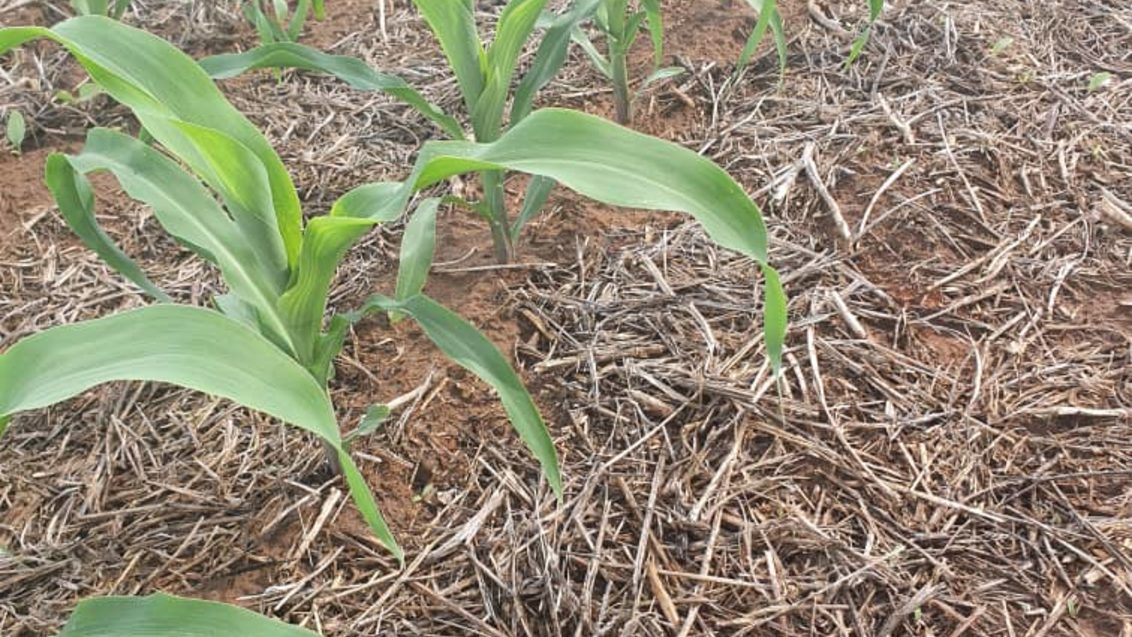Protect the seed before planting

By Felix Tembo - Key Account Manager Seedcare Southern Africa
Seed is a very important input in attaining agricultural productivity. Choosing the best seed is every farmer nightmare especially with a lot of fake seed on the market. There are many seed companies on the market offering different types of good seed. The basics of seed is that it should have the best genetics to make the farmer realise the best yields they can attain. Whatever we do to the seed is just to help it express its genetic potential and reduce the risk of being attacked by diseases and pests. There are several factors that farmers should take care of to maintain the potential for good seed. For instance, no seed material should be kept in direct sunlight; this will reduce the quality of seed or destroy it altogether. Seed must be kept at the recommended moisture content, and for maize it is recommended that it is kept between 12oC to 13oC. There should be good airflow and controlled humidity.
Suppose all the environmental conditions for meeting the basic standards of seeds are met, what do we need to do to maintain that potential? Syngenta has a department that is specialised in supplying products that protects all types of seeds distributed in Zambia and beyond. Let’s share some of these technologies that Syngenta is offering to the seed industry.
Maize seed
Maize is a very important crop in Zambia. It is grown by most of the farmers. Maize seed production has grown in the last five years, and we are a net exporter of maize seed to the region. Zambia exports maize seed to most of the countries in the region. For seed to be accepted, it should meet certain basic standards. There are many diseases that affect the seed once planted and after germination. Some of the disease pathogens are found on the seed, inside the seed and in the soil. They may be in a dormant stage and once the seed is sown and starts to germinate, they will infect the seedling. Some of the common diseases in maize at Pythium and Fusarium. As a farmer you can’t see them with a naked eye, but you will be able to see their effects on the plant. Some of the effects or symptoms are die-back of the seedling after germination, failure of the seed to germinate and different defects on the foliage of the plant. All these affects the quality of the plant and subsequently the yield. In addition, maize seed is affected by storage pests as well as soil pests once it germinates. Some of the storage pests that can damage maize seed are large grain borer, lesser grain borer, weevils, and beetles. In the soil, the seed as it germinates can be attacked by wireworms, white grubs, cutworms, and stalk borers. The plant is still vulnerable even after it has germinated as aphids, grasshoppers and the devastating Fall Armyworm can still attack the new plant.
To effectively cultivate maize for yield, it is important that the seed is protected. Syngenta has seed applied fungicides (SAF), seed applied insecticides (SAI) and some seed coating that is used to help stick the materials to the seed. MAXIM XL is a seed applied fungicide that farmers can used to protect against soil and early fungal diseases. Protecting your seed with such products is similar to what is done to humans. When a child is borne, they are vaccinated against many diseases such as polio, tuberculosis, and measles. MAXIM XL has got two active ingredients; one is contact while the other is systemic. The implications are that the seed is protected while in the soil as well as it germinates. Treating the seed with only MAXIM XL will only protect the seed and seedling from diseases, what about pets?
Syngenta also supply seed applied insecticides (SAI) as stated earlier in the article. One of the most popular SAI is FORTENZA Duo. This is activated on the seed and offer protection against soil pests. This is very important because the impact of soil pests on productivity is that they reduce the plant population. In addition to the soil pests, FORTENZA Duo also provides protection against Fall Armyworms four weeks after germination. The product will also offer protection against aphids, thrips, and grasshoppers. The product also has some activity on stimulating root growth both in lengths and volume/mass. This is very important because it allows the plant to maximise on water and nutrient uptake. To allow these products stick to the seed, a product called polymer which also gives colour is added. The polymer also allows the seed to free flow when being planted. Therefore, the quality of seed is determined by the genetics of the seed, the environment in which it has been kept in and the protection that the seed has been treated with. Next time you want to buy seed from an open area, think twice because you could just be buying fake seed.
Other crops such as wheat also have products from Syngenta. In wheat, Syngenta supplies a product called CELEST Top, which has got three active ingredients: two fungicides and an insecticide. This gives the seed total protection from one product.